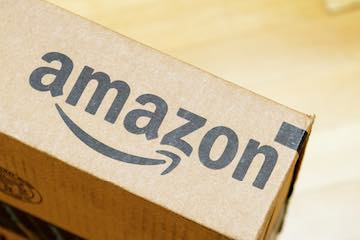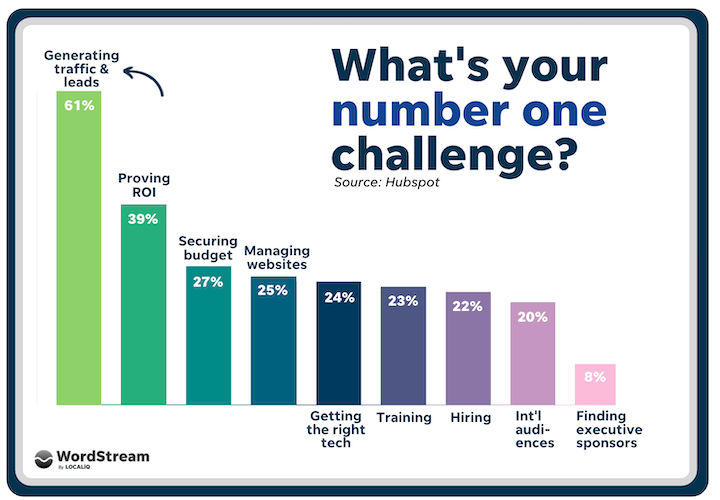
The other thing to talk about is TikTok’s preference for new creators. TikTok rewards them with views. It’s common for a new creator on TikTok to get 100,000 views on a single video. That person will think, “This platform is awesome. I’m making good stuff.” But it’s often temporary. We’ve seen many folks on TikTok develop large audiences initially, followed by significant drops later.
On YouTube, content is becoming more targeted. The platform is very saturated. It’s tough nowadays for a video to reach a million or more views. Plus, YouTube’s algorithm has shifted towards hyper-personalization. My YouTube home screen shows 15 to 20 videos recommended to me with 2,000 views each. It’s all niche content that’s supposed to appeal to me personally. These changes help small creators build a following, but it’s now more challenging to have those viral hits.
That strategy is complex and expensive, which is why the iOS privacy breakdown has disproportionately hurt smaller businesses. My content team costs me upwards of 0,000 per month.
Bandholz: How did Ridge adjust to iOS 14.5 limitations? Sean Frank: We were just at the VidCon conference in Los Angeles. Two main conversations came up. The first is that influencer rates have quadrupled across the board from 2020 to 2022 because of crypto, fintech, and other venture-capital-backed companies entering the space. They have unlimited budgets, and their customer acquisition cost targets are very high — probably ,000. They flooded the channel with money.
Frank: Let’s talk about what broke and what didn’t. Following 14.5, consumers still spent time and bought stuff on Facebook and Instagram. So that didn’t break. The number of folks on the app didn’t go away. What broke was understanding the exact person at the exact time wanting to make an exact purchase. It mainly hurt niche brands.
That works for our business because we’re a high margin, high average order value product. Our AOV exceeds 0. Our north star for specific advertisements is the one-day return on ad spend from actual clicks. If we spend 0 on an ad and drive a sale from a click within 24 hours, we know it will indirectly produce two or three additional sales. If we drop to 0.7 — in revenue from a 0 ad — we know to look elsewhere. So that’s how we evaluate if an ad is above or below the average.
Frank: It’s mainly a breakeven goal. We look at the marketing efficiency ratio, which is total revenue divided by total marketing spend. A 1.4 MER for us means we’ve broken even though the revenue is 1.4 more than the direct cost. A MER of 1.4 covers the cost of goods sold and shipping and will help keep the lights on. But it leaves no profit. However, we’re printing money with an MER of 3.0.
But products such as wallets, shoes, shapewear, and loungewear had a pretty good year because they appeal to a wide audience. The broader the audience, the easier to manage the change. We’re not trying to sell anything that revolutionary. It’s a cool, nice wallet.
Three months later, Apple’s iOS 14.5 upended Facebook’s ad targeting. Then a slew of venture-capital-funded startups began marketing via influencers, dramatically increasing the cost.
A realistic rate for most influencers these days is to per thousand subscribers, depending on the niche. Again, rates were roughly a quarter of that in 2020. The increases have been disproportionate. A female influencer on YouTube could charge per thousand or more.
The outlook was bright for Ridge Wallet when its CEO appeared on this podcast 16 months ago. The company, makers of metal-clad billfolds, had hit million in annual sales in just seven years. Hyper-targeted Facebook ads produced strong results, and influencer marketing, Ridge Wallet’s principal revenue generator, was abundant and cheap.
The second conversation is how sponsors such as Ridge Wallet should respond. Influencer rates in 2021 and Q1 2022 were insane. But in the second half of 2022, many of those new sponsors have stopped spending.
Frank: Our site is Ridge.com. Hit me up on Twitter.
It’s a hard time to be a creator. People realize that building an audience on a platform they cannot control is becoming difficult. You’re essentially building your castle on someone else’s land when launching a YouTube or TikTok channel. Many creators are shifting towards owning their platforms, such as newsletters.
But Sean Frank, the CEO, is unfazed. It turns out that Ridge Wallet’s Facebook ads do not need much targeting. And influencers? The 2021 boomlet is over; sponsorship rates are declining.
Bandholz: How do you respond to an per-thousand price?
Frank: We’re super transparent. We try to be as friendly as possible without being offensive. We’ll tell them, “Look, this is what we’re trying to pay. We are here if you ever want to do a deal.” Most brands are scared of offending influential people. I’m sure influencers have been disappointed with what we’re spending. But we’re paying more than YouTube AdSense.
Bandholz: What is your primary ad metric to track performance?
And we’ve doubled down on ad creative since 2020. We’re cranking out hundreds of ads each week to test. That’s the best indicator of success — rapid content testing. On Facebook and even TikTok, content doesn’t last long without spending.
I spoke to many popular YouTube influencers with millions of subscribers. They told me sponsors are dropping out. They asked if Ridge would step in.
He and I discussed those topics and more in our recent conversation. The entire audio is embedded below. The transcript is condensed and edited for clarity.
A vegan dog food company that relied on Facebook targeting is likely out of business. The layers of data that Facebook once produced were lost. A merchant can no longer find people wanting to feed their dogs vegan food.
Further, we’ve always had attribution methods. We use post-purchase surveys. We have around a 30% open rate for our post-purchase email.
Since 2018 we’ve used an ecommerce intelligence tool called Northbeam. It provides essential attribution data. When iOS 14.5 broke Facebook in May 2021, we accelerated our spending.
Eric Bandholz: Ridge Wallet has long relied on video-based influencers. What’s the status of that channel?
Bandholz: Where can people follow you?

![Amazon Announces Prime Day Lightning Deal Submissions [2021]](https://research-institute.org/wp-content/uploads/2021/03/amazon-announces-prime-day-lightning-deal-submissions-2021-768x376.jpg)




